This is a so called callback.
addListAfterKeypress at line 30 is not a call to this function, it is just saying, whenever the event keypress is raised on this input element, call this function.
Who is calling the function is the DOM library, indeed. You just have to pass a pointer to the function to be called.
Even more, the addListAfterKeypress function expects an event parameter, which will be provided to the function by the DOM library.
I think it is a bit more understanding by looking at an annonymous function there.
input.addEventListener('keypress', event => {
// This will be run whenever the input raises an event of type 'keypress'
// Here, the DOM library provides me an event parameter
});
Edit on demand:
Be aware, I am using ES6 just for comfort.
Suppose having this function
const callback = () => {
console.log(`My callback function is being executed`);
};
I will be using setTimeout to mock the HTML events. setTimeout is a function that expects a callback to execute after n milliseconds.
The first parameter is the callback itself, the second is the amount of milliseconds, n.
See https://www.w3schools.com/jsref/met_win_settimeout.asp
setTimeout(callback, 500); // After 500ms, function callback will be fired
Here, I am just passing a pointer to the setTimeout function. This pointer must point to a function that will be called by setTimeout.
Let's write our own function that takes a callback as a parameter.
const callback2 = (number) => {
console.log('I received this parameter', number);
};
const callbackWrap = (callback, n) => {
// Here, callback parameter is a function that I can invoke, actually
console.log('The wrapper will execute the function passed as parameter');
callback(n);
};
Now, we can call the wrapper pointing to the new callback (callback2).
callbackWrap(callback2, 3);
callbackWrap(callback2, 4);
Or, we can define our function directly on the parameter list.
That is, we are passing an annonymous function
// p is the parameter of the callback function
callbackWrap(p => {
// Since callbackWrap will call the function parameter
// by passing a single parameter,
// the function I am declaring, expects that parameter
console.log(`Received ${p} inside the annonymous function`);
}, 'Parameter');
So, to summerize a bit, just the same way you can declare a variable (let's say, of type number) and then pass it to a function as a parameter, you can declare a function to pass it the same way.
const normalParameter = 30;
const functionParameter = p => console.log('Another callback', p);
callbackWrap(functionParameter, normalParameter);
// Or maybe passing more complex parameters
const anotherParameter = [1, '2', {3: 4}];
callbackWrap(functionParameter, anotherParameter );
Hope it clarifies a bit.
